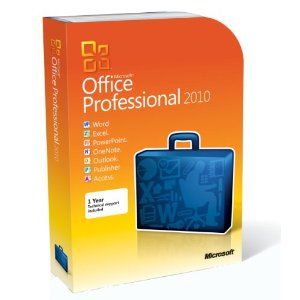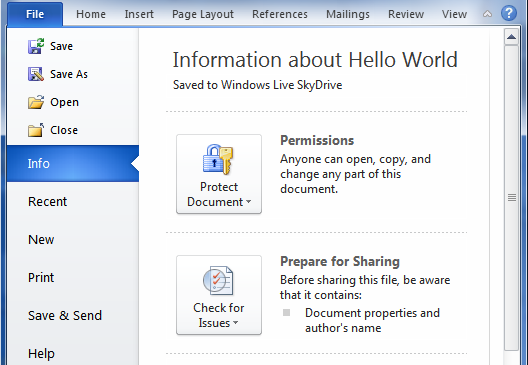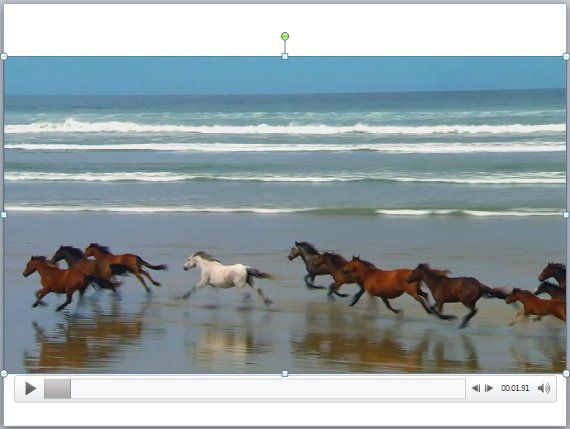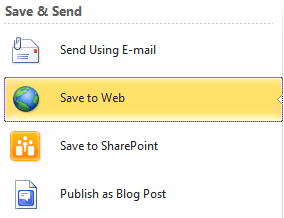Microsoft Office is kind of a big deal. Yes, there are some pretty nice free office suites available these days. But if you're creating documents for use in the professional world it is difficult to get by without them. Businesses almost universally use Office, and it's hard to tell how your stuff will look without having a copy yourself.
Of course, the reason most people are reluctant to get a hold of Office is the price. A copy of MS Office Home and Business is usually between $200 and $300. If you already have Office 2007, you may also be reluctant to upgrade for this reason. Why lay down the dough when your older copy of Office seems to work fine? That's a good question - and one that I hope to answer with a brief Microsoft Office 2010 review and comparison.
Interface Changes - There, But Not So You'd Notice
Office 2007 made some major changes to the Office interface. Microsoft introduced the ribbon concept, which replaced the older interface that relied on a traditional combination of small icons and expandable text menus. Although the ribbon interface can be a bit confusing at first, it starts to become clear quickly, and works well.
Microsoft hasn't done a lot to change the ribbon interface. It's a bit re-organized, and the entire application has a off-white appearance rather than the blue appearance of Office 2007. The biggest change to the ribbon is an addition - Outlook now has the ribbon interface. It is also possible to minimize the ribbon interface by clicking on an arrow icon in the upper right hand corner of your Office window.
The biggest interface difference that most people will notice is the new File button that replaces the big, round Office button found in the 2007 edition. While the old Office button was a gussied-up file menu, the new File button looks like a ribbon interface tab. It opens up a full-screen display that includes both file options (save, print, etc) and options to display recently opened documents, detailed document information, and more.
New Image Editing Features
Office isn't Photoshop. The suite has always offered limited image editing features, but the results were always oddly unprofessional for a suite of productivity programs built to be the cornerstone of the modern office PC.
Microsoft has been working on these features, and has implemented better functionality in Office 2010. The image editing and WordArt features include new preset filters, shadows and themes that you can select to spice up your work, and the resulting images don't have the super-grainy appearance that has been the trademark of images edited in Office for years.
PowerPoint users will also enjoy new transitions and animations. Transitions and animations used to be combined into one ribbon interface tab, but each now has its own tab with more options. You can finally edit videos, as well. Office 2007 treated them like images, which obviously limited what you could do with a video in a PowerPoint presentation, but now you can edit videos by cropping them, adjusting brightness, etc.
Office Catches Up With Web Applications
Technology changes rapidly, and the most interesting new ideas are also often the least expected. The leaves Office flat-footed, as they come out with new versions once every three to four years. Google, Open Office and other free competitors simply update whenever they feel it's necessary. Google Documents has been around for some time now, as has other collaborative document services like Zoho.
Now Office is getting into this game as well. The new Save to Web feature lets you save files directly to your Windows Live SkyDrive, which offers 25GB of capacity for free. Once you've uploaded a file you can retrieve it on other computers or you can share it with others. If you're on a computer which does not have Office installed you can still edit the file using Microsoft Office Web Apps (provided the document is a Word, Excel or PowerPoint file).
PowerPoint has a new web feature, as well, called BroadCast Slide Show. It's fairly self explanatory. This features lets you broadcast a slideshow on the web, making it easier to handle online presentations that make us of PowerPoint slideshows.
Conclusion
As you might expect, comprehensively detailing the many changes made between Office 2007 and Office 2010 would take more space than we have available here. The changes above are the ones that I feel the average user is most likely to notice or find beneficial, but feel free to leave your own favorite change in the comments.
The reason we came here, however, was to determine if Office 2010 is better than Office 2007 and worth an upgrade. In terms of "better than" Office 2010 offers clear advantages over the 2007 edition. The web application support alone is a big deal, never mind the more subtle changes.
Upgrading isn't free, so you'll have to ask yourself what you use Office for. The core functionality of creating documents, spreadsheets and slideshows has not significantly changed. The new edition of Office isn't more intuitive, either. Users who don't ask a lot from Office are unlikely to receive much benefit from upgrading to 2010. The main appeal of Office 2010 is to those who use Office for most of their working day - these users will appreciate the new features and subtle tweaks.
Let us know whether or not you will be upgrading, and if so, what features of Office 2010 made you decide to pay for it.






